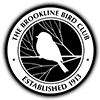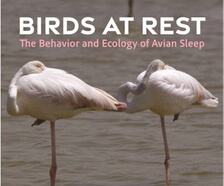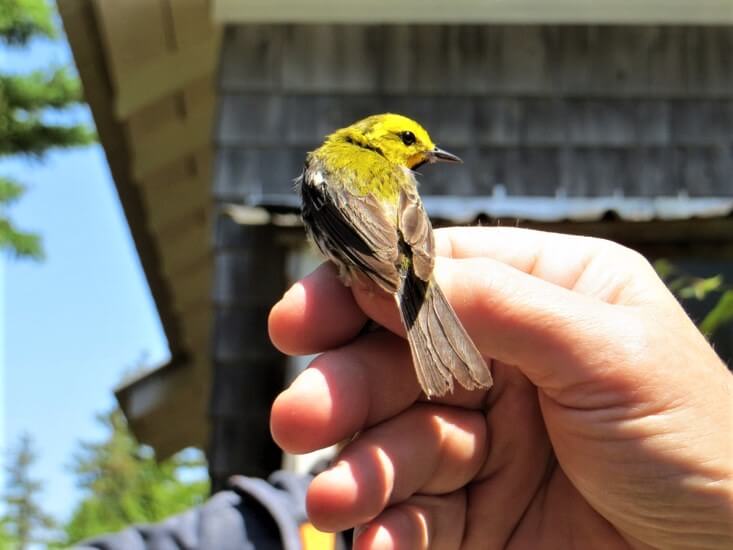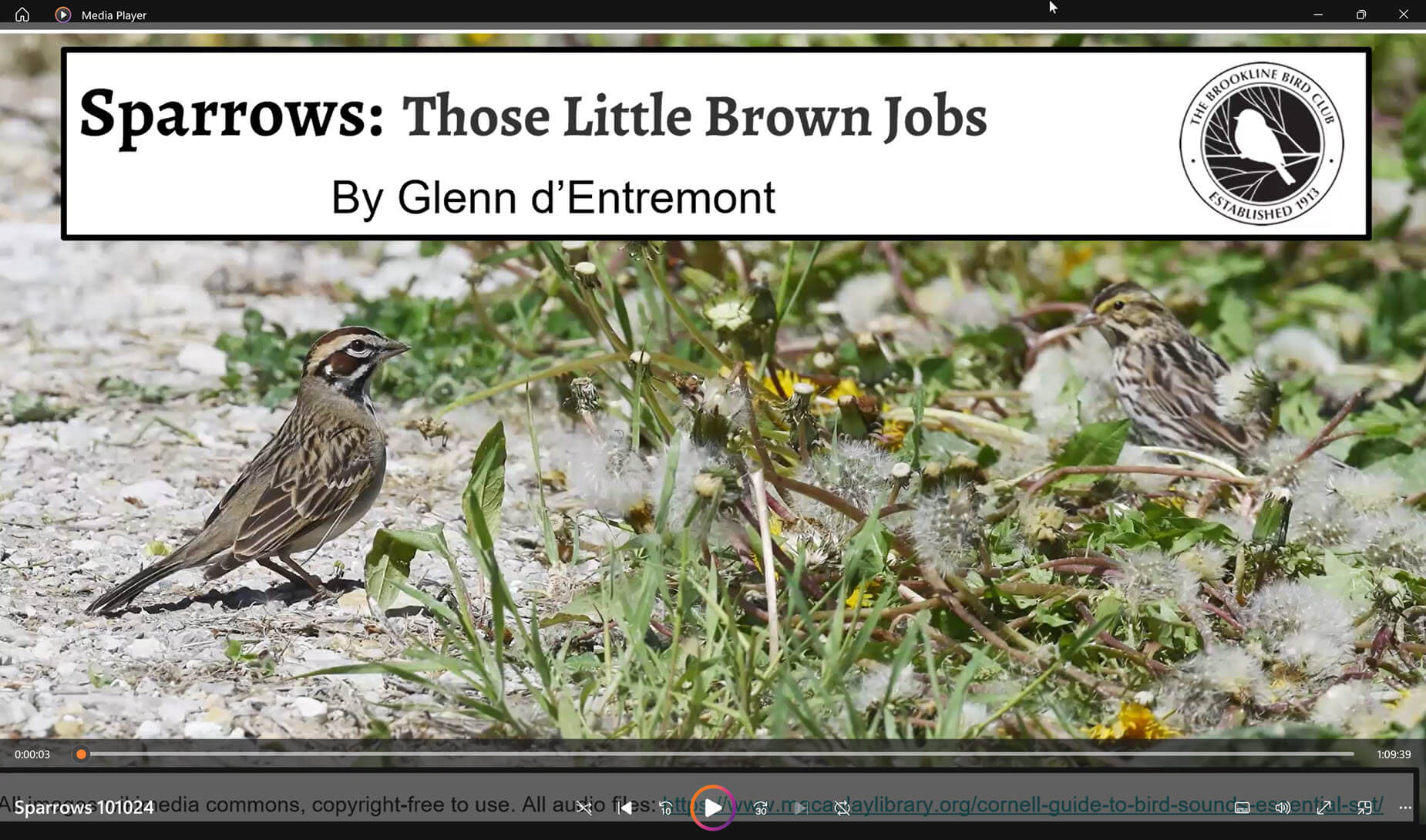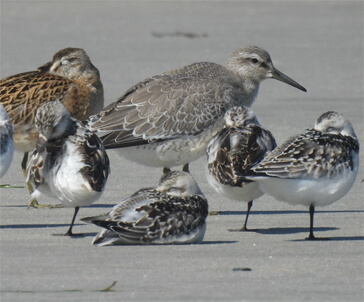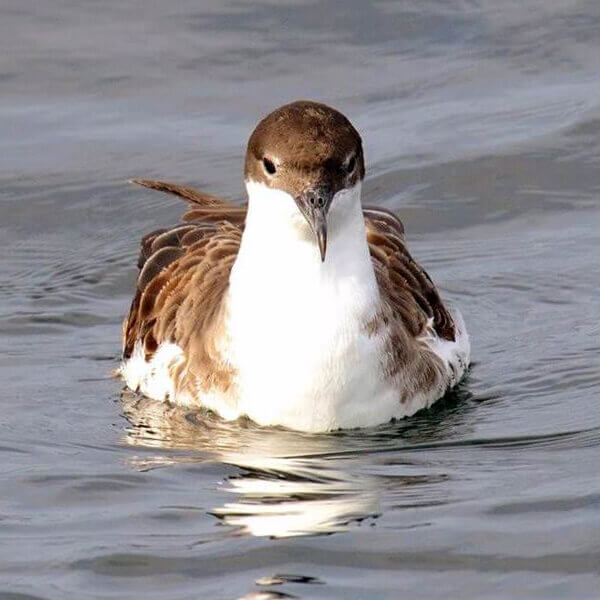Did you know that white ash, a bird‐friendly tree, has diamond patterns in its bark? Or, that 100‐200 organisms live inside leaves? More than 20 birders showed up Sunday morning for the Brookline Bird Club’s Tree Identiication walk led by Harvard University botanist Walter Kittredge, and learned this much and more. Toting binoculars and carrying a list of trees found in Belmont‐Watertown’s Beaver Brook Reservation, participants studied compound and simple, opposite and alternate leaves, bark textures, tree structures and soil preferences of specific trees. 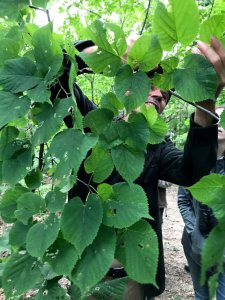
Walter described and passed around leaves from various species of oaks and maples, cherry, beech, birch and ash trees, so we could note differences and similarities among leaf shapes and content. Non‐native species such as glossy buckthorn, porcelain berry and oriental bittersweet unfortunately thrive at Beaver Brook, and we identified many examples of these highly invasive vines ‐ “the worst!” Throughout the walk, we considered reasons why certain trees support birds and wildlife better than others: in short, it’s about the insects and other creatures that live on the leaves and bark of some (native) trees and not others, so a chewed‐up, hole‐ridden leaf is generally a great sign of a bird‐friendly tree! Frequent references were made to Doug Tallamy’s Book, Bringing Nature Home, which makes the case for planting native oaks, 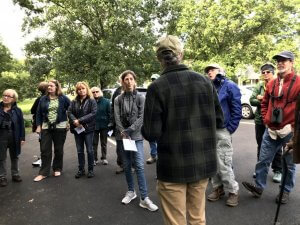 birches, maples and other native trees that support birds in many ways. At the end of walk, we arrived at and studied a young, impressive swamp white oak while watching a dozen American Robins, 2 Blackpoll Warblers, a Pine Warbler and a Red‐eyed Vireo consuming bittersweet berries and insects lurking beneath their dense foliage. Birders were not disappointed: we saw some late fall warblers and learned how and why they stopped at Beaver Brook to refuel on their ways elsewhere.
birches, maples and other native trees that support birds in many ways. At the end of walk, we arrived at and studied a young, impressive swamp white oak while watching a dozen American Robins, 2 Blackpoll Warblers, a Pine Warbler and a Red‐eyed Vireo consuming bittersweet berries and insects lurking beneath their dense foliage. Birders were not disappointed: we saw some late fall warblers and learned how and why they stopped at Beaver Brook to refuel on their ways elsewhere.
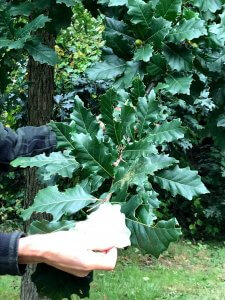
Note: the Brookline Bird Club is planning future conservation‐minded walks. Please check our website and massbird for announcements: https://brooklinebirdclub.org/
News Categories
Upcoming Field Trips
-
-
Belle Isle Marsh and Vicinity
East Boston - Belle Isle Parking Lot 1399 Bennington Street, Boston, MA, United StatesLed by DCR staff. We will search on foot up to one mile, on flat, easy terrain for snowy owls and other raptors, native sparrows, finches, waterfowl, and other birds. This is a traveling program by car or bike. Prepare for ticks. Ages: Adults and kids 8 years+ with adult chaperone. Binoculars recommended. ADA/Reasonable Accommodations [...]
-
Early Birders @ Chestnut Hill Reservoir, Boston
Chestnut Hill Reservoir 2420 Beacon Street, Boston, MA, United StatesJoin fellow birders in their 20s-30s as we visit Chestnut Hill Reservoir for a low-key bird outing before the new year! Located on the outskirts of Boston next to Boston University, Chestnut Hill Reservoir is a former water supply distribution reservoir that is a hot spot for waterfowl activity & other residents. Expect to walk [...]
-
-
Race Point Beach
Provincetown - Race Point BeachLet’s start the year with some awesome birds! We will bird from the beach close to the parking lot. We may walk the beach depending on participants interest. Several species of alcids are possible as well as gannets, Iceland and Glaucous Gulls and three loon species. Dress for cold windy weather. We may try other [...]
-
New Year’s Day Birding — Newburyport and Vicinity
Newburyport - Cashman Park 68 Sally Snyder Way, Newburyport, MA, United StatesJoin us on our annual New Year’s Day birding trip! We may also venture on to Cape Ann. In case of inclement weather check with leader night before trip. Note that an entrance fee or pass is required to visit Parker River NWR.
-
Belle Isle Marsh and Vicinity
East Boston - Belle Isle Parking Lot 1399 Bennington Street, Boston, MA, United StatesLed by DCR staff. We will search on foot up to one mile, on flat, easy terrain for snowy owls and other raptors, native sparrows, finches, waterfowl, and other birds. This is a traveling program by car or bike. Prepare for ticks. Ages: Adults and kids 8 years+ with adult chaperone. Binoculars recommended. ADA/Reasonable Accommodations [...]
